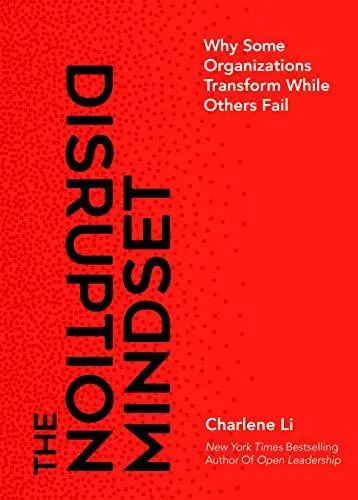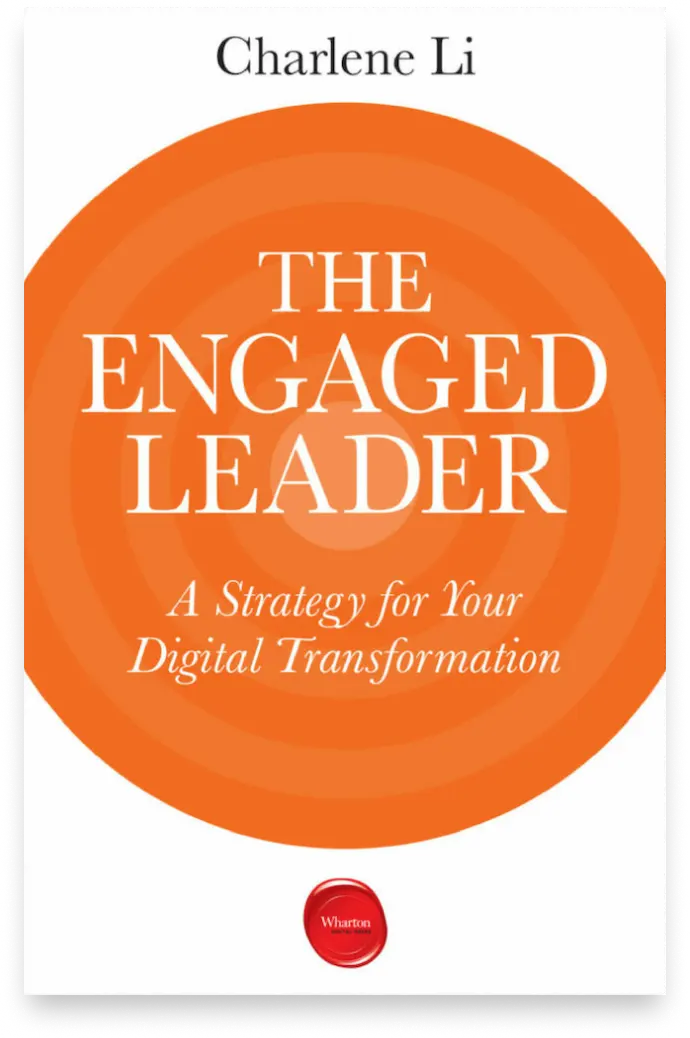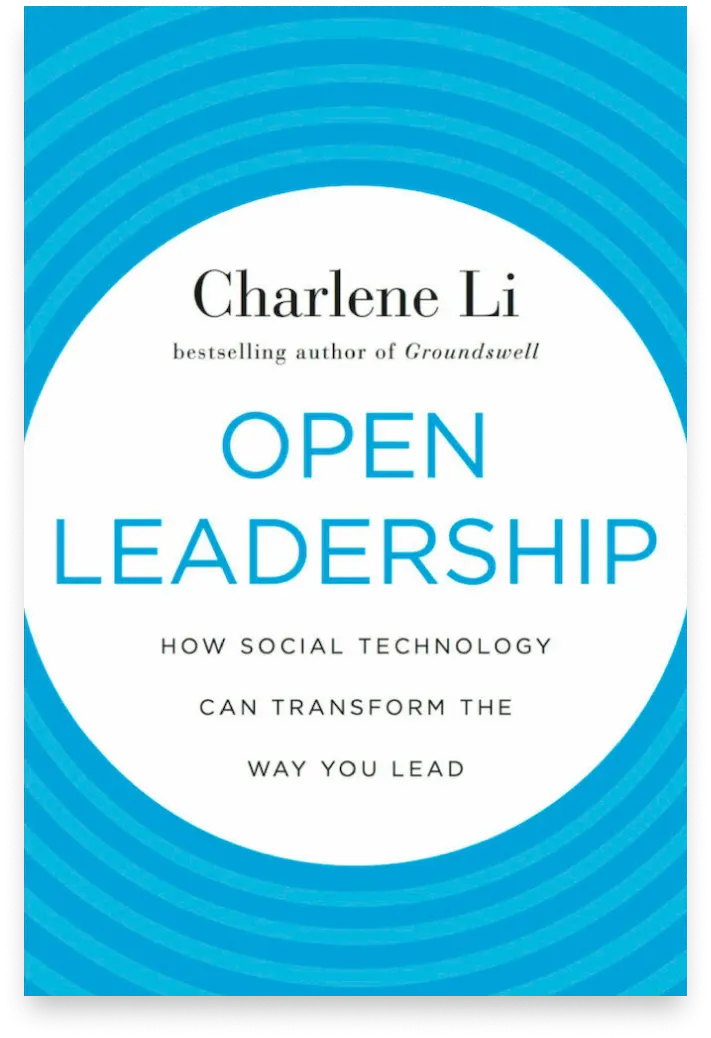Lucidea’s Lens: Knowledge Management Thought Leaders Part 36 – Charlene Li

Stan Garfield

Charlene Li specializes in disruption, digital transformation, leadership, customer experience and the future of work. She has written about social media, social business, and Enterprise Social Networks (ESNs).
She is the author or co-author of six books, including The Disruption Mindset, The Engaged Leader, Open Leadership, and Groundswell. She is a frequent blogger, speaker, and podcast guest.
Education
- Harvard Business School – Master of Business Administration
- Harvard University – AB, Social Studies
Experience
- Chief Research Officer – PA Consulting, 2022 – Present
- Founder, CEO, and Senior Fellow – Altimeter, a Prophet Company, 2008 – 2022
- Analyst and Research Director – Forrester Research, 1999 – 2008
- Internet Publisher – Community Newspaper Company, 1995 – 1999
- Project Manager – San Jose Mercury News, 1993 – 1995
- Consultant – Monitor Company, 1988 – 1991
Profiles
Books
The Disruption Mindset: Why Some Organizations Transform While Others Fail

The Engaged Leader: A Strategy for Your Digital Transformation

Open Leadership: How Social Technology Can Transform the Way You Lead

Groundswell, Expanded and Revised Edition: Winning in a World Transformed by Social Technologies with Josh Bernoff

Videos
- Wise Leaders Make Wise Decisions: How to Cultivate Wisdom at Work
- Defining the Future of Work
- YouTube Channel
- YouTube Search
- Vimeo
Presentations
Podcasts
- The New Rules of Disruption
- Succeeding at Digital Transformation
- What do the next five years of work look like?
- Cultivating a Disruption Mindset
- Disrupting your business
- What leaders get most wrong about disruption
- Digital Transformation Learning Path
- The Community Roundtable Podcast
- Fostering Product Innovation through Community & Customer Empathy
- The Role of Communities in Navigating Disruption
- Rule #1 – Lead Through Relationship
- Rule #2 – Start with the Future in Mind
- Rule #3 – Recognize The Power Shift
- Rule #4 – Build Openness And Trust
- Rule #5 – Embrace Healthy Conflict
- Rule #6 – Scale Leadership With Agency
- Rule #7 – Overcome the Resistance to Change
- Rule #8 – Leverage Digital To Grow Relationships
- Rule #9 – Replace Perfection with Excellence
- Rule #10 – Embrace the Contradiction of Order and Change
Other Content
Articles
- Navigating Change? You Might Need a Chief Transformation Officer
- A Holistic, Four-Step Approach to Driving Sustainable Transformation
- Can You Change a Large, Established Company’s Culture? Yes! Here’s How.
- Five Actionable Ways to Create More Psychological Safety at Work
- How I Consistently Create Thought Leadership
- Impossible Deadlines Are Better Than Doable Deadlines. Here’s Why.
- Silos: The Good, the Bad, the Dysfunctional—and the Fix
- A simple gratitude practice will change your company culture
- Can Operational Efficiency and Innovation Coexist? Yep! (And It’s Your Job as a Leader)
- Does Culture Really Eat Strategy for Breakfast?!
Making the Business Case for Enterprise Social Networks
Four Ways Enterprise Social Networks Drive Value
Despite the promise and potential for ESNs, they have only received moderate traction. The problem is that most ESN deployments to date have been treated as technology deployments with a focus on adoption and usage. A different way to think about this is that ESNs represent a new way to communicate and form relationships — and because of that, can bridge gaps that exist in terms of information sharing and decision-making processes. To better understand these use cases, we found that they boil down to four different types of gaps in the organization — tough problems that can’t be addressed by the current technology, process, or culture.
- Encourage sharing. Remember how revolutionary email was? It fundamentally changed the way we communicated by reducing the cost/effort and collapsing the time frame and scaling it to include multiple recipients. Social represents a fundamental change, simply because, at its essence, it encourages sharing. The simple presence of a status update box on a page encourages people to share their thoughts, activities, and expertise.
- Capture knowledge. Capturing the collective knowledge of an organization is a daunting task because it includes a wide range of facts, information, and skills gained through experience. Yet few people proactively sit down each day to document and capture their knowledge. ESNs provide an opportunity to do just that, by capturing glimpses of knowledge through profiles, activity streams, and interactions.
- Enable action. Having an ESN in place means that operations and processes can begin to change as well. This happens when the day-to-day process changes because the ESN enables new relationships and behaviors that address a gap that prevented actions from being taken.
- Empower employees. The last way ESNs drive value is that they empower and embolden people to speak up and join together, as well as gives them opportunities to contribute their skills and ideas.

Stan Garfield
Please enjoy Stan’s blog posts offering advice and insights drawn from many years as a KM practitioner. You may also want to download a free copy of his book, Lucidea’s Lens: Special Librarians & Information Specialists; The Five Cs of KM from Lucidea Press, and its precursor, Proven Practices for Implementing a Knowledge Management Program. Learn about Lucidea’s Presto, SydneyEnterprise, and GeniePlus software with unrivaled KM capabilities that enable successful knowledge curation and sharing.
Never miss another post. Subscribe today!
Similar Posts
Only You Can Prevent Knowledge Loss: How to Practice “Knowledge Archaeology”
An overview of ways in which knowledge is lost, with examples of how to perform knowledge archaeology to recover and restore it.
Ready to Read: Profiles in Knowledge: 120 Thought Leaders in Knowledge Management
We are pleased to announce that Stan Garfield’s new book, Profiles in Knowledge: 120 Thought Leaders in Knowledge Management, is now available from Lucidea Press.
Lucidea’s Lens: Knowledge Management Thought Leaders Part 92 – Jay Liebowitz
Jay Liebowitz is a professor, consultant, author, and editor. His research interests include knowledge management, data analytics, intelligent systems, intuition-based decision making, IT management, expert systems, and artificial intelligence.
Lucidea’s Lens: Knowledge Management Thought Leaders Part 91 – Frank Leistner
The late Frank Leistner was the former Chief Knowledge Officer for SAS Global Professional Services, where he founded the knowledge management program and led a wide range of knowledge management initiatives up until 2012.




Leave a Comment
Comments are reviewed and must adhere to our comments policy.
0 Comments